Table of Contents
Curly Hair Bangs
Curly hair bangs have long been misunderstood, often deemed too “unruly” or high-maintenance. Yet in recent years, they’ve emerged as one of the most expressive and flattering hair features for anyone with texture. From red carpet icons to everyday curl lovers, fringe styles are being tailored to coils, waves, and spirals of every type. Curly hair is a beautiful and unique feature that can be styled in countless ways.
One of the most trendy ways to enhance your curly locks is by adding bangs. Whether you’re looking for a bold change or a subtle refresh, curly hair bangs can elevate your look and add a touch of personality. The key lies not in forcing curls to behave like straight hair, but in embracing their bounce while sculpting them with intention.
| Bang Style | Best Suited Curl Type | Ideal Face Shape | Maintenance Level | Styling Tip |
| Curtain Bangs | 2A–3A (Loose Waves to Soft Curls) | Heart / Round | Low | Air-dry with light mousse for natural parting |
| Rounded Fringe | 3A–3B (Defined Spirals) | Square / Long | Medium | Trim dry to avoid shrinking too short |
| Bottleneck Bangs | 2C–3B | Oval / Heart | Medium | Leave longer at sides for contouring |
| Micro / Baby Bangs | 3C–4A (Tight Coils) | Oval / Heart | High | Use curl cream to define small spirals |
| Side-Swept Bangs | 3B–4C | Round / Square | Medium | Pin or diffuse sideways for asymmetry |
| Layered Halo Bangs | 3C–4B | Long / Square | High | Stretch curls slightly for controlled volume |
| Tapered Bangs | 4B–4C (Kinky-Coily) | Round / Diamond | Medium | Shape gradually instead of blunt cutting |
Understanding Curl Types Before Choosing Bangs
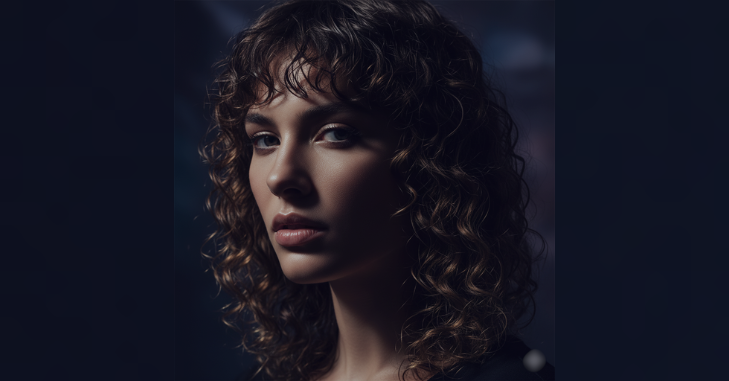
Different curl patterns react to moisture, length, and layering uniquely. Deciding on bangs requires knowing whether your strands spring tightly or drape loosely.
- Loose waves (2A–2C) benefit from softer curtain or bottleneck bangs
- Medium curls (3A–3B) shape well into rounded or wispy Fringe
- Tight spirals (3C–4A) thrive with cropped micro bangs or layered halos
- Coily and kinky textures (4B–4C) excel with tapered or sculpted side bangs
Selecting Bangs Based on Face Shape
Creating harmony between features and hairline ensures bangs enhance rather than overwhelm the face. A flattering fringe draws attention to cheekbones or eyes while elongating or balancing proportions.
Round faces come alive with diagonal or side-swept bangs that slice through the circular outline. Square faces soften beautifully when curls drape in soft arcs. Heart-shaped structures gain symmetry from wider volume across the forehead. Long faces look instantly more proportional with dense or rounded curly fringes that shorten the vertical stretch.
Benefiting from the Volume and Personality of Curly Bangs
Curly bangs offer more movement and dimension than straight styles ever could. Rather than sitting flat, they dance with light, wind, or even subtle facial expressions. They create lift without teasing, texture without product, and personality without effort.
The transition period from long hair to bangs may feel intense, but curls tend to grow back quickly. Many who try curly Fringe never return to a fully open forehead because of the softness and youthful energy it brings to the face.
Best Curly Bang Cuts to Consider
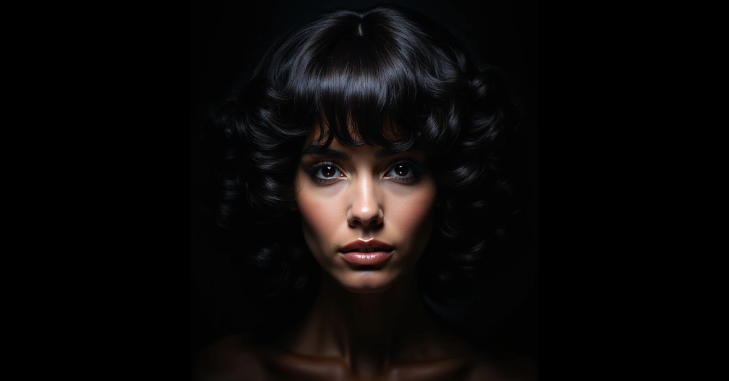
- Curly Curtain Bangs for effortless split styling
- Rounded Fringe for full, doll-like softness
- Bottleneck Bangs that taper near the temples
- Micro Curly Bangs for bold, vintage-inspired looks
- Side-Swept Spiral Bangs for asymmetry and romance
Choosing the Right Stylist for Curl Bangs
Curly bangs demand precision cutting while the hair is dry or styled in its natural pattern. A stylist experienced with textured hair knows how much shrinkage to anticipate and where to carve layers without bulk. Booking a consultation before the actual cut often helps avoid drastic mistakes. Bringing visual references also guides communication when terminology varies.
Working with someone who specializes specifically in curls rather than general haircuts results in more cooperative Fringe over time. A great cut minimizes daily styling, reducing the need for constant manipulation.
Daily Styling Habits That Define Curls Without Crunch
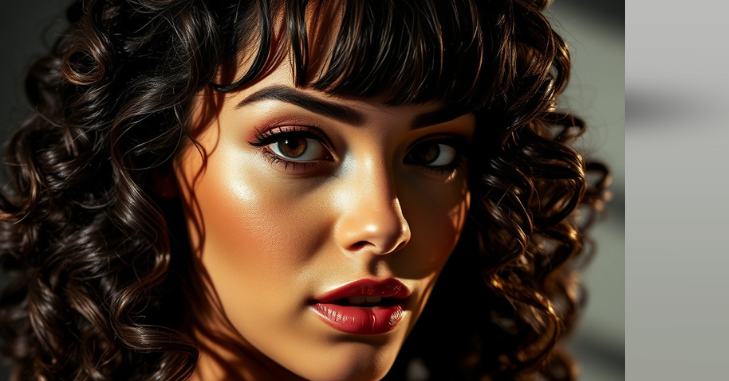
Hydration is Key
Curly bangs behave best when hydrated and touchable rather than stiff. Gentle application of light mousses or curl creams maintains shape while allowing for soft bounce.
Avoiding Heat Damage
Constant heat styling weakens definition, so air-drying or using a diffuser on low settings preserves elasticity.
Gentle Styling Techniques
Separating clumps with fingers rather than combs helps prevent the bangs from frizzing out or separating awkwardly.
Morning Refresh
Refreshing your bangs with water or mist in the morning can often bring them back to life without the need for rewashing.
Common Mistakes That Cause Curly Bang Regret
Cutting bangs while the hair is wet often leads to them bouncing shorter than intended. Ignoring shrinkage or density can leave them too thick or abruptly blunt. Skipping layering creates bulk around the eyebrows, making the forehead appear heavy. Overloading them with gel or heavy oil flattens their energy and prevents movement.
Taking gradual trims instead of major chops avoids shock. A long fringe that gradually transitions to a shorter style allows time for adjustment, both psychologically and aesthetically.
Maintenance Tips for Long-Term Bang Success
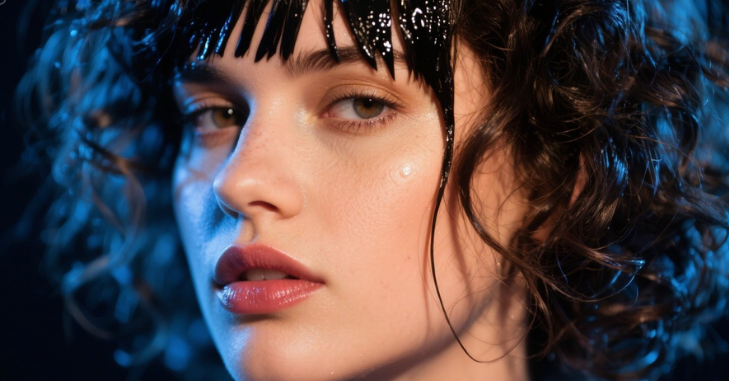
Curly bangs proliferate, typically needing reshaping every four to six weeks. A light trim at home with curl-friendly shears may suffice between salon visits. Consistently trimming only the ends while maintaining the overall shape guarantees longevity without drastic transformation.
Moisture masks once a week maintain elasticity, which is essential for Fringe that sits directly on the face. Protecting bangs at night with silk pillowcases reduces friction to prevent frizz.
Table of Best Bang Styles by Curl Type and Face Shape
| Curl Type | Ideal Bang Style | Best Face Shape Match | Styling Difficulty |
| 2A–2C Waves | Soft Curtain Bangs | Heart or Round | Low |
| 3A–3B Spirals | Rounded Fringe | Square or Long | Medium |
| 3C–4A Coils | Micro or Baby Bangs | Oval or Heart | High |
| 4B–4C Kinks | Sculpted Side Bangs | Round or Square | Medium |
Curly bangs evolve differently throughout the day depending on humidity and facial movement. Unlike straight bangs, they don’t remain static, which is part of their charm. Learning to appreciate natural variation rather than aiming for identical placement daily reduces unnecessary stress.
Weatherproofing Techniques for Humid or Dry Climates
Wet climates often puff up curls, while dry surroundings may deflate or stiffen them. Adapting products to the environment ensures consistent results.
- Humid conditions require gel-based leave-ins to seal cuticles
- Dry air favors butter-based moisturizers for flexibility
- Transitional seasons call for layering light hydration with lightweight hold
Mastering Frizz Control Without Flattening Curls
Frizz isn’t always the enemy when working with textured bangs. Some halo fuzz gives softness and diffuses harsh lines. However, when the volume turns chaotic, strategic smoothing becomes essential.
Applying anti-humidity sprays lightly to palms before patting over the bangs prevents stiffness. Avoiding direct contact between hands and strands reduces accidental oil transfer from fingers. Working with satin-lined headbands when traveling outdoors keeps the curls intact without imprinting dents.
Integrating Bangs With Updos and Ponytails
Curly bangs frame the face even when the rest of the hair is pulled back. High buns paired with loose spirals across the forehead create a romantic contrast. Sleek ponytails gain softness when fluffy fringe hovers gently above the brows. Even athletic hairstyles become fashionable with a bit of curl detail at the front.
Growing Out Curly Bangs Gracefully
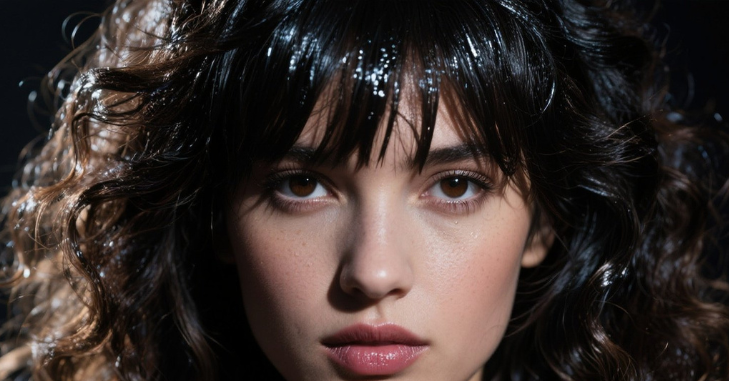
Eventually, some may decide to return to a full-length front. Rather than enduring an awkward phase, blending bangs with angled face-framing layers helps them merge fluidly into the rest of the hair. Curl cream application at the sides encourages integration and prevents uneven separation.
Regular reshaping during the grow-out keeps them from sitting flat in the middle of the face. Styling them sideways temporarily mimics side fringe to reduce the visibility of transitions.
Final Thoughts
Curly bangs aren’t a reckless impulse cut. They’re a statement of texture pride and individuality. They invite softness without sacrificing boldness, and they draw attention to the eyes like no other hairstyle can. What once was considered unruly now represents freedom. With the right knowledge and maintenance, curly bangs become less of a trend and more of a signature.
Curly hair bangs can be a fantastic way to refresh your look and express your personal style. By understanding the best cuts for your curls, choosing the right bangs for your face shape, and following maintenance and frizz-control tips, you can achieve a stunning and manageable hairstyle.
Want to know about Soft Curtain Bangs: The Ultimate, Effortlessly Chic and Versatile Face-Framing Hairstyle Check out our Fashion category.
FAQs
Curtain bangs or side-swept bangs are the most forgiving and grow out gracefully if you decide to change your look later.
Use lightweight anti-frizz products like curl cream, mousse, or leave-in conditioner, and avoid brushing when dry. Diffuse on low heat or air-dry for best definition.
Curly bangs should always be cut dry, as curls shrink significantly when dry. Wet cutting often results in bangs being much shorter than intended.
Since curls shrink and grow unevenly, trimming every 4–6 weeks helps maintain the shape without sudden length changes.























